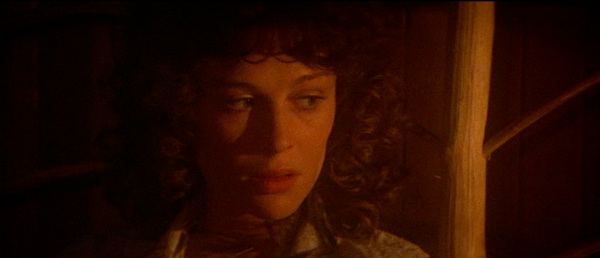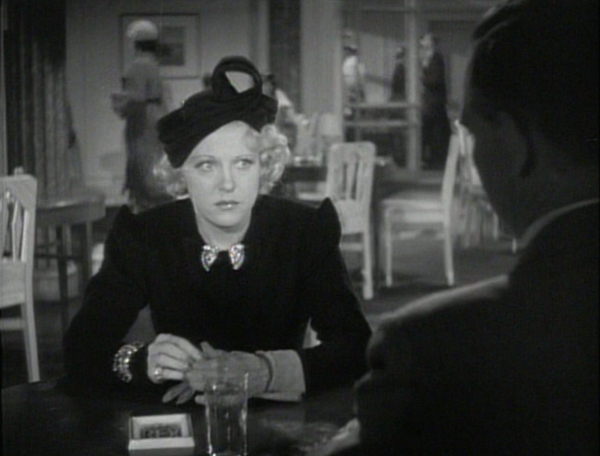Write-ups about the New York Film Festival—the 57th installment opens tonight, September 27, and runs through October 13—tend to focus, rightly so, on new releases. But each year festival curators select retrospectives and revivals to showcase during the festival. These include some significant films, as well as titles that reflect on the Main Slate.

Organized by Kent Jones and Dan Sullivan, with help from cinematographer Denis Lenoir (Wasp Network), this year’s retrospective is a tribute to “The ASC at 100.” Predating the Motion Picture Academy of Arts and Sciences, the American Society of Cinematographers is one of the most respected crafts groups in the industry. Founded in 1919, it has evolved into a community of artists eager to share and mentor their colleagues with workshops, master classes, and competitions.
The retrospective includes outstanding ASC members like James Wong Howe, Gregg Toland, Leon Shamroy, and John Alton. Most recent members are showcased as well: Sven Nykvist, Haskell Wexler, Néstor Almendros.
The earliest title is Street Angel (1928, screening Sept. 28 at 3:30), one of several films that costarred Janet Gaynor and Charles Farrell. Gaynor won an Academy Award for her portrayal of a woman unable to pay for her mother’s care. Cinematography was shared by Ernest S. Palmer and Paul Ivano.
Gregg Toland is perhaps best-known today for his deep-focus work on Citizen Kane, but The Grapes of Wrath (1940, Sept. 28 at 5:30) is exemplary in its own way. Directed by John Ford, this adaptation of the John Steinbeck novel was risky enough on political and economic levels. Toland, working with Ford for the first time, went even further, pushing the boundaries of what was considered acceptable cinematography. The film’s graphic depictions of migrant camps are as shocking today as they were to viewers in the 1940s.
The Hard Way (1943, Sept. 28 at 9:00), Leave Her to Heaven (1945, Sept. 30 at 3:30) and He Walked by Night (1948, Oct. 1 at 9:00) all offer idiosyncratic takes on film noir. The first, shot by James Wong Howe, puts a dark spin on Warner Bros. musicals. Leon Shamroy won an Oscar for his Technicolor work on Leave Her to Heaven, which set the dark passions of noir in blazing California sunlight. And He Walked by Night is an excellent showcase for John Alton’s dark vision.
Sven Nykvist (The Passion of Anna, 1969, Oct. 2 at 6:30), Vilmos Zsigmond (McCabe & Mrs. Miller, 1971, Oct. 3 at 3:15), and Gordon Willis (The Godfather Part II, 1974, Oct. 5 at 8:45) were among the most famous cinematographers of their time, notable for their distinct styles as well as their deep relationships with directors. Nykvist found a visual correlative to Ingmar Bergman’s psychological explorations. Zsigmond used flashing and fogging on his negative to give an antique, ethereal look to Robert Altman’s version of the western frontier. Willis further deepened and darkened Francis Ford Coppola’s already grim take on the Mafia.
Haskell Wexler is the only cinematographer in the series represented by two titles, Days of Heaven (co-credited with Nestor Alméndros) and America, America. The former, directed by Terrence Malick (1978, Oct. 7 at 3:45), brought a new visual palette to motion pictures. It is an exceptional example of Alméndros’ work.

America, America, on the other hand, shows Wexler’s remarkable ability to fashion a visual component to Elia Kazan’s script and direction. No other Kazan film looks like this, with extended scenes shot handheld, Wexler prowling restlessly among the actors. Kazan and Wexler did not get along, but their collaboration resulted in one of the more surprising and rewarding releases of its time.
Ellen Kuras shot Dave Chapelle’s Block Party (2005, Oct. 10 at 3:15), the most recent entry in the series. A veteran who has worked with Martin Scorsese, Spike Lee, and Jim Jarmusch, as well as Michel Gondry, Kuras brought her camera seemingly everywhere in this concert documentary.
A distinguished documentarian, Joan Churchill co-directed Soldier Girls (1981, Oct. 7 at 9:00) with Nick Broomfield. They collaborated on Aileen: Life and Death of a Serial Killer, Sarah Palin: You Betcha!, and other titles. Drawn to controversial topics, Churchill continues to shoot hard-edged, visually compelling movies. She will be speaking at the NYFF screening.
The Revivals cover a broad range of titles, from rarely seen documentary shorts by the Italian director Vittorio De Seta (Oct. 2 at 3:15) to the seven-hour Satantango by Béla Tarr (Sept. 30 at noon). Of special note: Bert Stern’s Jazz on a Summer’s Day (1960, Sept. 28 at 8:30), an influential documentary about the Newport Jazz Festival (with a brief performance by Chuck Berry); Jack Arnold’s The Incredible Shrinking Man (1957, Oct. 3 at 3:45), perhaps the most entertaining existential crisis of its time; and a new print of Valerio Zurlini’s Le Professeur (1972, Oct. 1 at 3:15), complete with 45 minutes of additional footage cut from the original release.

A silent film that helped establish director Luis Buñuel, L’age d’or (1930, Sept. 29 at 7:15) will be shown along with his unsparing Los Olvidados (1950, Sept. 29 at 9:00). Together they confirm Buñuel’s place as one of the most original and uncompromising voices in cinema.
Finally, Kenneth Lonergan will be introducing William Wyler’s Dodsworth (1936, Oct. 10 at 8:45). Walter Huston plays the title character, a businessman who realizes he is unhappy with his wife when he travels to Europe. It may be the most honest depiction of a troubled marriage that Hollywood had attempted up to that point; it’s certainly one of the most mature and nuanced films of its time. Wyler and scenarist Sidney Howard still managed to come up with a more optimistic storyline than the source novel by Sinclair Lewis.
For more information visit the NYFF website: https://www.filmlinc.org/nyff2019/


